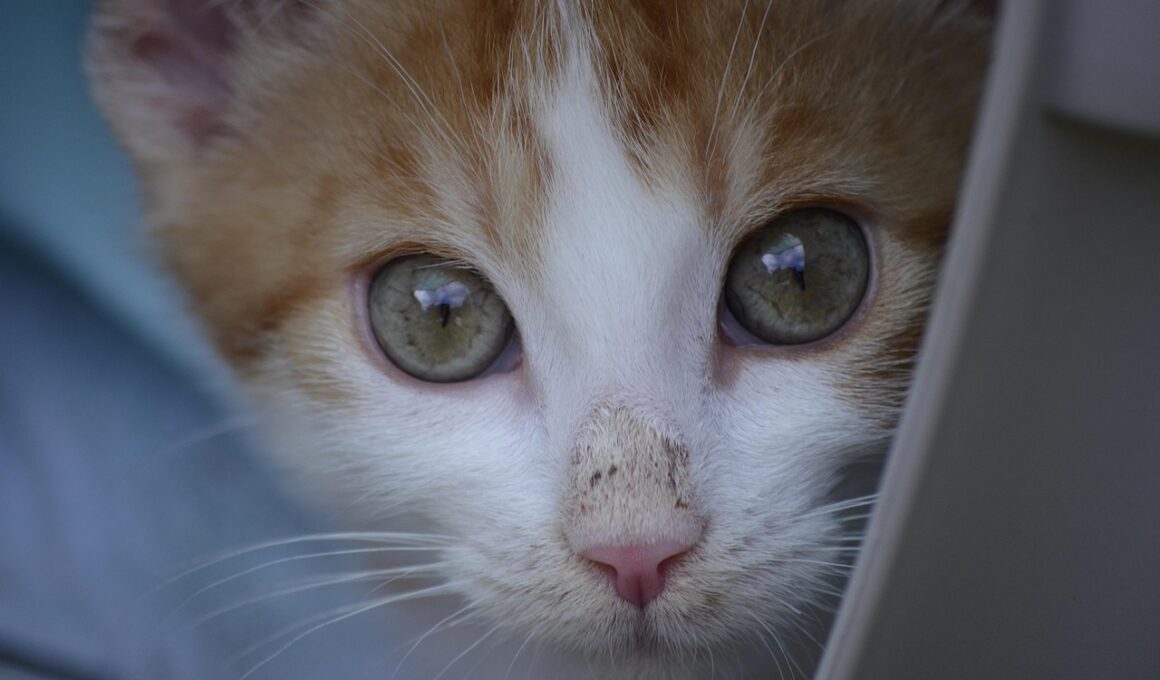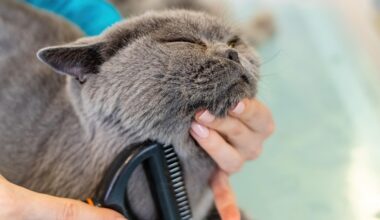Raising Awareness on Cat Rescue Through Shelter Events
Cat rescue organizations play a crucial role in saving feline lives. By collaborating with animal shelters, these groups bring attention to the many cats in need. Such partnerships foster a sense of community around animal welfare, encouraging local residents to get involved. Events organized by shelters often provide a platform for education, inviting the public to learn about proper care, adoption processes, and spaying or neutering. Volunteers actively engage with attendees, sharing stories about cats that have found their forever homes. This emotional connection can inspire attendees to adopt. Successful events often include activities like petting zoos and meet-and-greet sessions with adoptable cats. Guests will enjoy some refreshments while learning how they can make a difference. In addition, these collaborations often lead to increased donations for the shelter and rescue groups, enabling them to continue their vital work. By spreading awareness through these events, the message of caring for stray and abandoned cats reaches a wider audience. This ultimately encourages more individuals to consider adopting cats, promoting happier lives for both the cats and their new families. Education is key to making this impactful change.
Community Engagement and Education Initiatives
Many communities take pride in their shelters. Events held at these facilities provide an opportunity for local residents to engage with animals in need. By hosting open houses and adoption fairs, animal shelters can create an inviting atmosphere. Families can interact with adoptable cats, learn about their personalities, and discover ways to assist the shelters further. Cat rescue organizations often bring various resources to these events, including informational pamphlets and merchandise. Volunteers are available to answer questions and share stories of successful placements. This not only captures attendees’ interest but also inspires potential adopters. Moreover, these engagements often promote local businesses and vendors who wish to contribute. They may provide goods or services through sponsorship, enhancing the event experience. Several shelters also consider hosting workshops on cat care, spaying, or neutering. Such workshops can raise awareness about responsible pet ownership. When community members feel connected to their local shelter, they are more likely to support initiatives aimed at reducing stray numbers. Therefore, educational initiatives play a vital role in improving the shelter’s outreach efforts and attracting potential cat adopters.
Partnering with local businesses can also amplify outreach efforts. Collaborations with pet supply stores facilitate supply drives that bring attention to cat rescue needs. These events often feature donation bins for essentials such as cat food, litter, and toys. In return, businesses frequently gain customer goodwill and visibility within the community. Additionally, businesses could sponsor adoption events, offering discounts to customers who adopt or donate. Engaging in this way benefits both the shelters and local businesses. Social media becomes a valuable tool for promoting these events. Local shelters should leverage platforms to share information and build excitement. Posting images of adoptable cats and event details can significantly raise awareness. Users often spread these posts, creating a ripple effect. Webinars and live streams can also promote the cause, allowing a broader audience to learn about cat welfare. Storytelling through both social media and other platforms connects the community emotionally to the plight of stray cats. Creating ongoing relationships between shelters and businesses energizes the community’s involvement in supporting a common cause. Together, they can significantly improve the lives of abandoned and stray cats.
Volunteer involvement is a cornerstone of successful shelter events. Volunteers are essential for planning, promoting, and executing these events. They often bring unique perspectives and skills to the table, enriching the experience for attendees. Training volunteers on their specific roles ensures that events run smoothly and efficiently. For instance, volunteers can help manage adoption applications, liaise with local media, and coordinate activities like face painting or games. This makes the event enjoyable for families and keeps children engaged while encouraging them to interact with adoptable cats. By creating an inviting atmosphere, volunteers can draw in potential adopters who may not have considered adopting a cat before. Moreover, involving volunteers creates a sense of ownership within the community. They inspire others to join in the cause. Incentives like free workshops or exclusive merchandise can encourage more community members to become involved. Long-term volunteer engagement promotes a culture of care and advocacy for all animals. Ultimately, these successful events can reshape perceptions of shelter pets, shining a light on the joy and love they can bring to families. The community bond strengthens as they gather for these shared goals.
Collaborative Marketing Efforts
Marketing plays an important role in promoting cat rescue initiatives through shelter events. Utilizing digital marketing strategies is vital to reaching younger audiences. Social media campaigns provide a quick way to raise awareness and create excitement around upcoming events. A well-crafted campaign can include eye-catching graphics, captivating stories, and even videos of the cats available for adoption. Furthermore, collaborations with local influencers can expand the reach. Influencers can encourage their followers to attend events and support local shelters. Flyers and posters created for these events should be placed in strategic locations. Utilizing local coffee shops, dog parks, and veterinary offices increases visibility. Following up these marketing efforts with press releases to local news stations can provide the coverage timelines need. Hosting fun contests or giveaways can also generate buzz leading up to events. Encouraging people to share their experiences on social media using specific hashtags builds an online community around the event. Strong marketing efforts drive turnout, ultimately benefiting the cats in need. Increased attendance can lead to more adoptions, helping reduce the number of cats awaiting homes. Thus, implementing effective marketing strategies is essential.
In addition to traditional marketing, creating an engaging online presence is critical. Websites and blogs dedicated to cat welfare can share information about shelter events and adoption tips. Including testimonials from happy adopters offers a personal touch that resonates with potential adopters. These personal stories help potential adopters envision their lives with a shelter cat. This emotional connection can drive them to take the next step toward adoption. Utilizing email marketing newsletters can effectively keep previous adopters informed about events and encourage participation among their friends and family. Collecting contact information during events enables shelters to maintain ongoing communication. Engaging content keeps the audience interested, such as cat care advice or success stories of cats rescued. Engaging past adopters to share their experiences also strengthens community ties and builds a broader base of advocates. Collaboration with local media for event features enhances visibility, encouraging attendance and boosting awareness. Furthermore, infographics highlighting shelter impact can be shared online to showcase success rates. The goal remains to create a united effort in rescuing and placing as many cats as possible while enhancing community awareness of their plight.
Finally, assessing event success is important to fine-tune future efforts. Gathering feedback from attendees can produce valuable insights. Suggestions on ways to improve future events can help with planning and execution. Surveys, either digital or in paper form, can help collect this feedback efficiently. Analyzing attendance data helps gauge the effectiveness of marketing strategies. Understanding which outreach efforts were most successful directly informs future events. Even with the best planning, adaptation is necessary based on what works best for the community. Continually improving event structure is key to sustaining interest and maximizing impact. Measuring outcomes, such as how many adoptions resulted, provides another layer of success evaluation. Successful cat rescue initiatives grow from collaboration and continuous improvement. Sharing successes through social media strengthens community ties and encourages ongoing support. Celebrating achievements, no matter how small, reinforces commitment to the cause. Establishing a culture of feedback leads to greater engagement and higher attendance rates. Ultimately, ongoing evaluation and adaptation are vital to ensure that the mission of cat rescue is at the forefront of community efforts.


